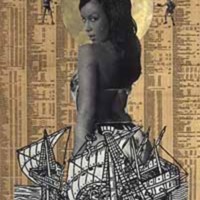
Lace and Slavery
During the Industrial Revolution Nottingham was famous for the manufacture of lace. In 2007 British-Ghanaian artist Godfried Donkor, supported by The New Art Exchange and the Centre for Contemporary Art in the city, investigated the often-neglected connections between this luxurious commodity and the cotton picked by enslaved Africans in the Caribbean and American South. The research culminated in an exhibition, ‘Once Upon a Time in the West There Was Lace’, at the Yard Gallery at Wollaton Hall in early 2008. The Elizabethan manor is also home to the Industrial Museum which holds lace-making machinery. A key part of the display were outfits created from brightly coloured lace, now a prized material in West Africa. Donkor's paintings on pages of the Financial Times represented people, culture and goods crossing the Atlantic in different eras. The exhibition was accompanied by a series of public events which looked at the links between the city’s past lace-making industry and slavery, including lectures and a free symposium.
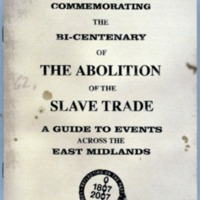
A Guide to Events Across the East Midlands
A guide to bicentenary activities and events in museums, archives and other venues across the East Midlands - Leicestershire and Rutland, Nottinghamshire, Northamptonshire, Derbyshire and Lincolnshire - was produced by Museums, Libraries and Archives East Midlands and Renaissance East Midlands. These events commemorated local connections to the abolitionist movement and to slavery. For example, Manor House Museum in Kettering produced a loans box containing material on William Knibb, a local abolitionist. Rothwell Arts and Heritage Centre produced an exhibition on the life of Rothwell-born missionary John Smith. Derby City Museums and Gallery worked with an artist and young people to explore Derby's industrial heritage and its links to the slave trade using The Silk Mill, Derby's Museum of Industry and History, as inspiration. Chesterfield Local Studies put together a touring exhibition to explore Derbyshire connections to the slave trade. A community commemorative event organised by Lincolnshire County Council and Lincolnshire African and Caribbean Support Group included a service of remembrance and the release of 200 'Freedom' balloons from Lincoln City Square on 24 March 2007.
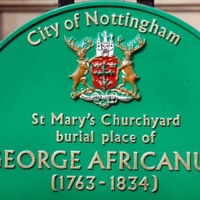
Rededication service for George Africanus
George John Scipio Africanus (1763-1834) was Nottingham's first recorded black entrepreneur, starting an employment agency called the 'Africanus Register of Servants'. As a child, Africanus was brought to England from Sierra Leone and given as a present to wealthy Wolverhampton businessman Benjamin Molineux. He then moved to Nottingham and became a freeholder. Nottinghamshire Archives and MLA East Midlands produced web resources for teachers and learners based on the life of George Africanus. An exhibition toured venues around the city, including Nottingham Council House and Brewhouse Yard. On 25 March 2007, as part of the bicentenary events in Nottingham, a service was held at St Mary's Church led by the Bishop of Kingston (Jamaica), the Rt Revd Robert Thompson. A new memorial stone was dedicated to Africanus, and a plaque unveiled commemorating his life.
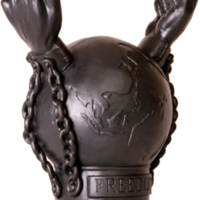
Abolition of the Slave Trade Act Commemorative Exhibitions
Nottingham Castle Museum held two exhibitions in 2007. Inspired by the anti-slavery medallion produced by Josiah Wedgwood in the 1790s, a group of young people from Nottingham’s African Caribbean community worked with artist Katherine Morling to explore issues surrounding slavery and the representation of black people in art. The group worked under the name Sankofa. The ceramic Globe of Freedom was fired at the Wedgwood factory in Staffordshire, and was displayed at Nottingham Castle Museum alongside the Wedgwood medallion. The word ‘FREEDOM’ is impressed on one side and ‘EQUALITY’ impressed on the other. A replica sculpture is still used as part of a handling collection loaned to schools and community groups in the Nottingham region. A second exhibition, in collaboration with the Open University in the East Midlands, looked at the British slave trade using slave narratives, telling the story of three survivors of slavery: Mary Prince, Robert Wedderburn and Quobna Ottobah Cugoano.
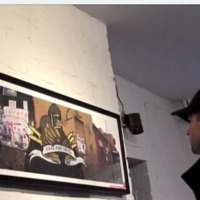
Freedom Song
Freedom Song involved young people from Derby, Leicester and Nottingham creating their own digital musical video shorts to express contemporary social and cultural experiences. The group in Derby looked to develop links to regional history and culture through the study of the songs of oppression and freedom of the slave trade and its musical legacies today. A heritage project involved participants researching music of their ancestors and predecessors in the cultural tradition, exploring the Windrush migrations, oral traditions and the impact of female artists on music cultures in the UK.